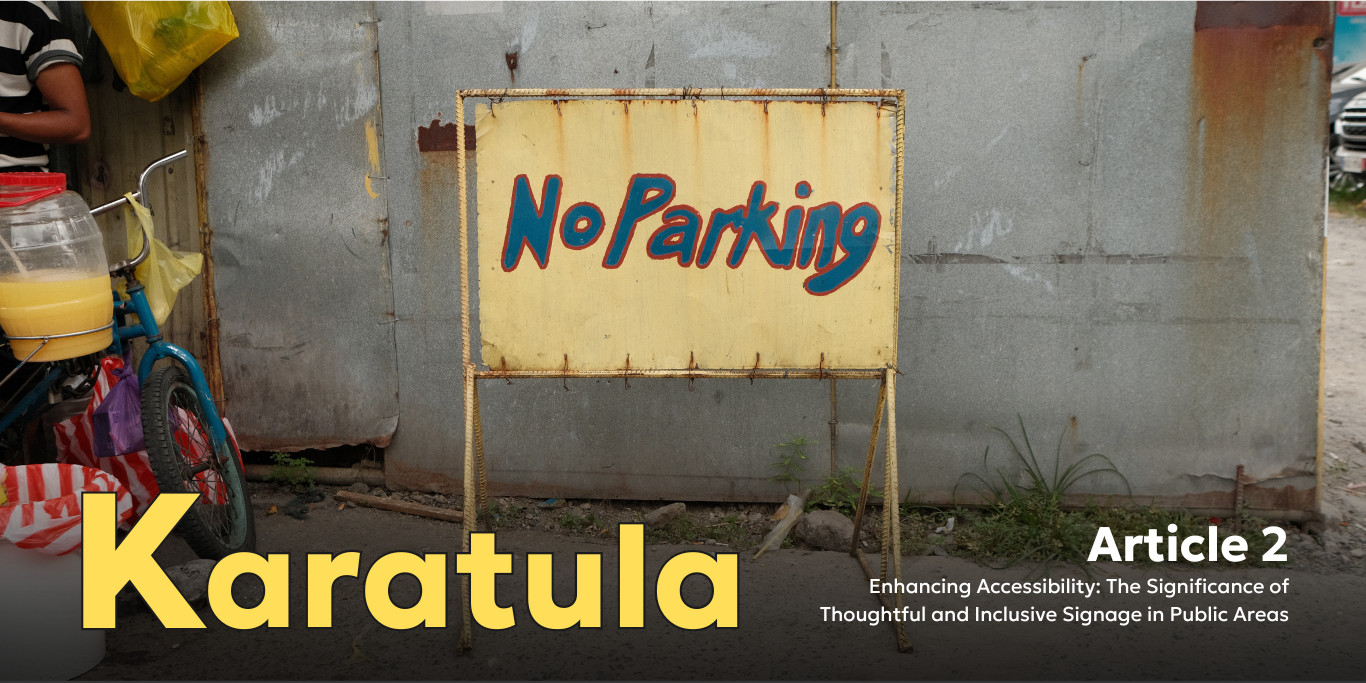
Enhancing Accessibility: The Significance of Thoughtful and Inclusive Signage in Public Areas
(The article aims to emphasize the pivotal role of consistent and inclusive signage design in fostering accessibility for individuals with disabilities. It seeks to raise awareness about how thoughtful signage can create welcoming public spaces, educate on the impact of design consistency for navigation, promote inclusive practices accommodating various disabilities, empower through understanding the importance of accessibility, and advocate for universally inclusive environments that prioritize equality and belonging for everyone.)
The concept of designing is constantly changing to include innovative and inclusive signs. We need to shift our focus beyond mere aesthetics and instead establish a genuine connection with those engaging with our works by truly understanding their concerns. This blog explains how incorporating the users into the signage design results in a visionary transformation of public areas as invitingly picturesque and convenient spaces with no boundaries for all who take part in them.
Recognizing the Influence of User Engagement: Signmakers have important roles in affecting public perception about various public spaces. In addition, we aim at bridging design with users through designing visually attractive signs. Getting users involved in this particular way is very helpful. It helps us towards designs that are more relevant to the vast and varied needs of society in general.
Why Active User Engagement Matters

- Diverse Perspectives: User engagement is where we have an opportunity to bring different points of view through into the picture. Signage has a different meaning to different people, whether they are young, have special abilities or come from different parts of the world as well. Accepting such diversity provides us with full comprehension as to how our designs are able to target every kind of consumer in existence.
- Addressing Unique Needs: The various user groups may have unique needs. By engaging users we are able to discover specific needs, which means any of our signage would be visually attractive and functional for everyone including people with different abilities.
- Enhanced Usability: Ultimately, users are the final judges when it comes to assessing the usability of design. Such involvement allows for instant assessment of reliability. Through this iterative process, designs emerge that have both aesthetic appeal and inherent usability.
The Collaborative Design Process

- Surveys and Workshops: Gather insights through surveys or workshops and begin the process. By doing so, it provides an initial foundation towards the co-design of signage suitable to different contexts.
- Prototyping and Testing: Build models and engage customers for experimentation. Such hand-on strategy allows users to give their views on the practical design issues of the software that allows for more refinement.
- Integration of Feedback: Incorporate user feedback actively in the design process. We adopt the collaborative approach that guarantees the output is never just a product of our innovation, but the outcome of efforts geared towards maximizing users’ experience.
Effects in the final design
Benefits of active user participation are deep. Our designs are tools of inclusion and accessibility that go beyond aesthetics by taking into account what users want and need in design solutions. However, user engagement made our work stand out, resulting in an inclusive space for everyone where the final design is now the proof of it.
Sign makers, join me in this revolution. We can create places that go beyond just being pretty by including users in the design process. So, let’s design something that stirs the souls, and meets the needs of the people that we cater for. In doing this, we enhance user-friendly design and an inclusive environment for everyone.
Let’s together change the ways of doing design by making use of the collaborative power of dynamic participation.

We are reshaping the urban landscape, addressing unique needs for low vision impairment and colorblindness. Beyond static displays, our immersive experience engages users with groundbreaking signage solutions. Join us in transforming public perception, fostering awareness, and empowering individuals with disabilities.
Experience a city where inclusivity becomes reality at Karatula.